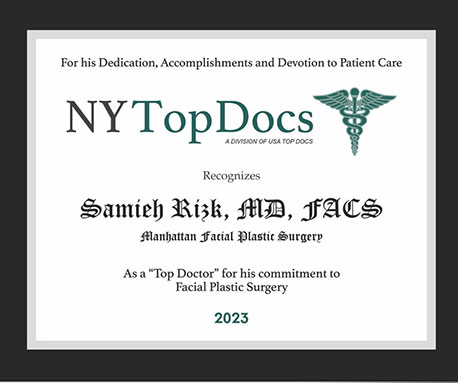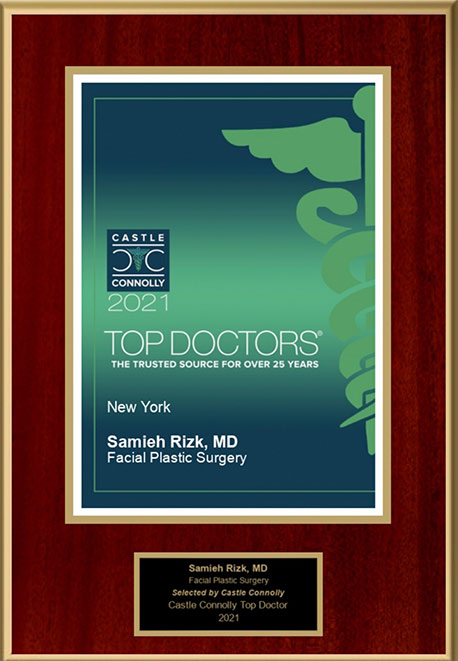Rhinoplasty for Nostril/Alar Base Reduction

Many people have a wide nasal base, nasal tip and/or nostrils. These common aesthetic traits are usually the result of genetics and are particularly widespread among certain ethnicities, including Asians, Hispanics/Latinos, African-Americans and patients of Mediterranean or Middle Eastern heritage.
There are a number of methods used to reduce the width of the nasal base, tip and nostrils. Collectively, the rhinoplasty techniques used to accomplish this are known as nostril and alar base reduction. They can be performed as part of primary or secondary (revision) nose surgery.
Anatomy of the Nostrils
Contrary to popular belief, there is no cartilage in the ala, or outer area of nostril. Instead, the outer edges of the ala and sidewalls are comprised of a fatty, fibrous, soft tissue. If you have thick ala it is not due to cartilage but rather to large quantities of this fibro-fatty tissue, which creates the appearance of flared nostrils or a wide nose.
Techniques to Slim the Nostrils
Nasal sill excisions. One way to reduce the width of the nostrils is to remove skin from the nasal sill, or floor of the nostril. This nasal sill excision can be effective in treating flared nostrils, and in patients who have a wide nasal floor. The shape of the incisions made with this method may be triangular, rectangular or diamond-shaped. One potential concern with nasal sill excisions is the scar they leave, which can be more difficult to conceal. However, in some cases patients already have a crease where the nasal sill and ala meet, and the incision can be placed along this crease.
Wedge excisions. Another way to narrow the nostrils is to make one of two types of wedge excisions, or Weir excisions, of alar tissue. The first type of wedge excision does not alter the circumference of the inner nostril. In contrast, the second type does involve excision of internal nostril skin, which has the effect of further reducing the size of the nostril. Surgeons often prefer to use wedge excisions because the scar they produce can be hidden in the crease formed where the cheek meets the ala. Wedge incisions are usually closed with two sets of sutures: one deep set of sutures that are dissolvable and a more superficial set of sutures, which are removed after a couple of weeks.
The V-Y advancement technique. Yet another way to narrow the width of the nostrils is a method known as the V-Y advancement technique. With this method, an incision is placed below the upper lip crease, extending around the location of the inner nostril insertion and then deep into the nostril
Another incision is placed along the floor of the nostril. In cases where the nostril sill is especially wide, a crescent-shaped piece of skin may be excised from the nostril insertion. If not, the alar insertion point will be relocated closer to the columella, following the incision previously made in the floor of the nostril. This has the effect of moving the nostril and alar sidewall inward, in turn narrowing the nose. The V-Y advancement technique has the advantage of minimizing removal of skin. In addition, it may be reversible in some cases. And, it is easier to hide the scar produced with this technique than the scars produced by wedge excisions.
Combined excisions. Sometimes the best way to reduce the width of the nostril region is to combine different types of excisions. This is usually the case when significant reduction is necessary.
Treating the Alar Scar
In some cases an alar scar may become thick or “hypertrophic.” When this occurs it may be necessary to inject a steroid into the scar to improve its appearance. Another option is dermabrasion, which essentially involves applying a local numbing agent and then sanding down the scar. Dermabrasion resurfaces the scar by removing the outer layer of skin cells and enabling new, smooth skin to grow in its place.
Choosing a Surgeon
After alar base reduction your nose should be in harmony with your other facial features. However, nostril reduction is a complex surgery that requires the well-honed skill of an expert facial plastic surgeon. Potential complications include asymmetry, deformity and excessively narrow nostril openings. With so much as stake, it is important that you choose a board-certified facial plastic surgeon to perform your procedure.








